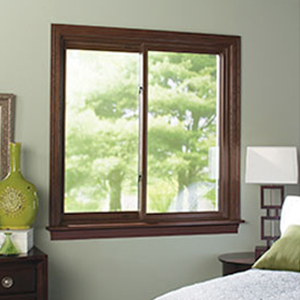Condensation is a sure sign that your windows need to be changed.
Windows are a vital barrier between the harsh, variable weather conditions outside and our tranquility, regular house temperature levels. Home replacement windows quite often have a fifteen to twenty-year life-span, so luckily we do not need to think about replacing them too often. However recognizing when it's time to replace them can be complicated. You might be tempted to try and hold out for another season if you recognize the warning signs. But changing your home windows currently could aid you extend the life of your whole house and also maintain you as well as your family members cozy all winter long. Below are a couple of indicators that your home windows are not ready for the rough winter season this year.
Drafty Home
As home windows age, they begin diminishing, breaking, as well as not shutting appropriately, allowing air from inside your the home of drain. As a result of this, your HVAC system has a hard time to maintain your residence at a continuous temperature level and also sends your energy bills increasing. If your house is visibly a lot more breezy or your electric bills appear to be rising this succumb to no noticeable factor, you may want to have your windows checked out.
Hard to Lock
We take pleasure in having our windows open when the weather is nice, yet they shouldn't be open all the moment. During the winter months and when we're away, your windows must be shut in place as well as secured. Windows with malfunctioning locks is a major security threat that ought to be fixed asap to maintain your family members secure. Frequently the lock can be fixed reasonably, yet if the window is having difficulty remaining open or closed or is dripping air, it might be best to simply mount a new one.
Condensation Forming
The biggest sign that you require brand-new windows is when condensation begins to base on the inside of your window when it is shut and locked. This is a sign of a most likely permanent flaw as well as needs to be dealt with asap to stop the prospective development of mold in the structure, which can spread to other areas of your residence as well as cause severe damage when left untreated.
Have you just about had it with your old, drafty home windows?
Is this the year you've decided to finally change your windows? Replacing your home windows with brand-new ones includes great deals of advantages, including an energy performance boost, better air flow, as well as better top quality of light in your house. The National Window Rating Council certifies as well as identifies windows (along with doors and also skylights) on their performance and power efficiency. When you're looking for new home windows you'll see these scores on the NFRC tag. In this week's blog, we'll talk about how you can read this tag making sure you're making an educated decision on your new home windows.
Warmth Gain and Loss
The very first 3 residential or commercial properties on the tag pertain to how the home window performs when it come to warmth gain and also loss. Windows gain as well as lose heat in three ways:
Direct transmission through the glass.
Radiation of warmth from the sunlight right into the house, and also away from the house from things in your house.
Air leak via and also around the home window.
U-factor
This is "The price at which a window, door, or skylight carries out non-solar heat flow." The takeaway here is "The lower the U-factor, the a lot more energy-efficient the home window, door, or skylight."

Solar Heat Gain Coefficient
The SHGC informs us how much radiation is admitted through the window and also released as warm in the home. The reduced the number, the much less warm is transmitted. Nevertheless, this doesn't always imply you want a reduced SHGC. As an example, because a higher SGHC indicates the home window allows a lot more warmth in, you could allow more solar warm inside in the winter season, which can decrease your heating demands. In this situation, the climate you stay in will certainly play a major consider selecting an SHGC score.
Air Leakage
This measures how much air the home window allows about a specific pressure difference throughout it. The reduced the rating, the much less air leak.
Sunshine Transmittance
The following two rankings determine just how much light a home www.bureshhomesolutions.com window lets right into your residence.
Visible Transmittance (VT).
This number in between 0 and 1 steps what fraction of the range of noticeable light the home window lets through. The higher the fraction, the much more light the home window will certainly permit. If you want to employ daylighting in your house, you'll desire a higher portion. If you want to reduce indoor glare, you could want a lower fraction.
Light-to-Solar Gain.
This number is the ratio in between the SHGC and also the VT. "The greater the number, the more light transferred without adding extreme quantities of warmth.".